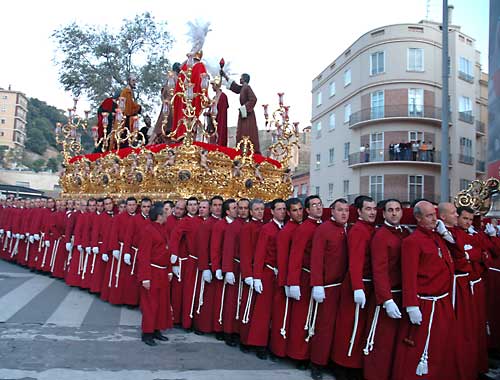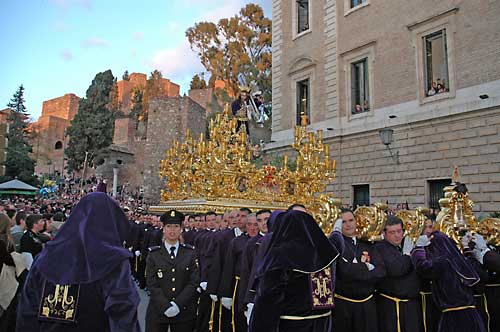Holy Week in Malaga
Holy Week in Malaga, is an ancient tradition that dates back to the age of the Catholic Monarchs. The city of Malaga is the capital city of the Costa del Sol and is located in Andalusia, the south of Spain, a land that perfectly combines modernity and tradition in the middle of the 21st Century. The most famous of these traditions is, undoubtedly, its well-known Holy Week of Malaga.
For more than 500 years of history, Holy Week of Malaga has been constantly present in the religious and popular feeling of people from Malaga. On February 16, 1980 it was declared of International Tourist Interest. A spectacular event of religious, social and cultural character that attracts millions of visitors to the capital of the Costa del Sol.

The taste for Baroque art by the religious brotherhoods and associations and the great amount of processional materials that they have been accumulating for centuries result in a street stage of exuberant art, full of colour and majesty.
Every year, during the Passion Week in Malaga takes out to the streets a real festival perceptible by the five senses: processional thrones carrying images that are swung all along the entire route, thousands of penitents lighting and giving colour with their candles and robes, processional marches, as well as aromas of incense and flowers filling the air as the processions pass by and thousands of people crowded to see and applaud their favourite tronos (floats, thrones).
Holy Week in Malaga, is very different to that celebrated in other Andalusians or Spanish places, and those who go to Malaga for the first time will be surprised, as the Passion Week there is not lived with meditation and silence, but it is full of happiness, noise, cheer, spontaneous saetas (flamenco verses sung at the processions) and applauses as the images pass by.
Some tronos (floats) of Holy Week of Malaga, are so huge that they must be housed in other places different form the churches, as they are taller than the entrance doors; real walking chapels of over 5,000 kilos swung by dozens of bearers. And also military parades playing processional marches or singing their anthems along the route. All this do not imply a lack of religiosity, but it is just the particular way that people from Malaga live their faith and feeling during the Holy Week.
Thus, the processions of the Holy Week in Malaga, offer a unique appeal in Spain, not only for those who participate in the processions, but also for all those visitors and tourists from throughout the world who spend the Holy Week in Spain and are interested in admiring the visual impact of the processions and all artistic manifestations that can be seen from a secular perspective.
More than 5 million tourists visit Malaga's Holy Week today. A cosmopolitan city that is accustomed to tourism and that it has the most experience and infrastructure for this event throughout Spain.

The excellent communications by road and by air (through the airport), the first-class modern hotel infrastructures in the city centre, together with the wonderful warm climate, make it possible that tourists and visitors enjoy the beaches and the rich artistic heritage of Malaga in the mornings and the processions in the evenings.
